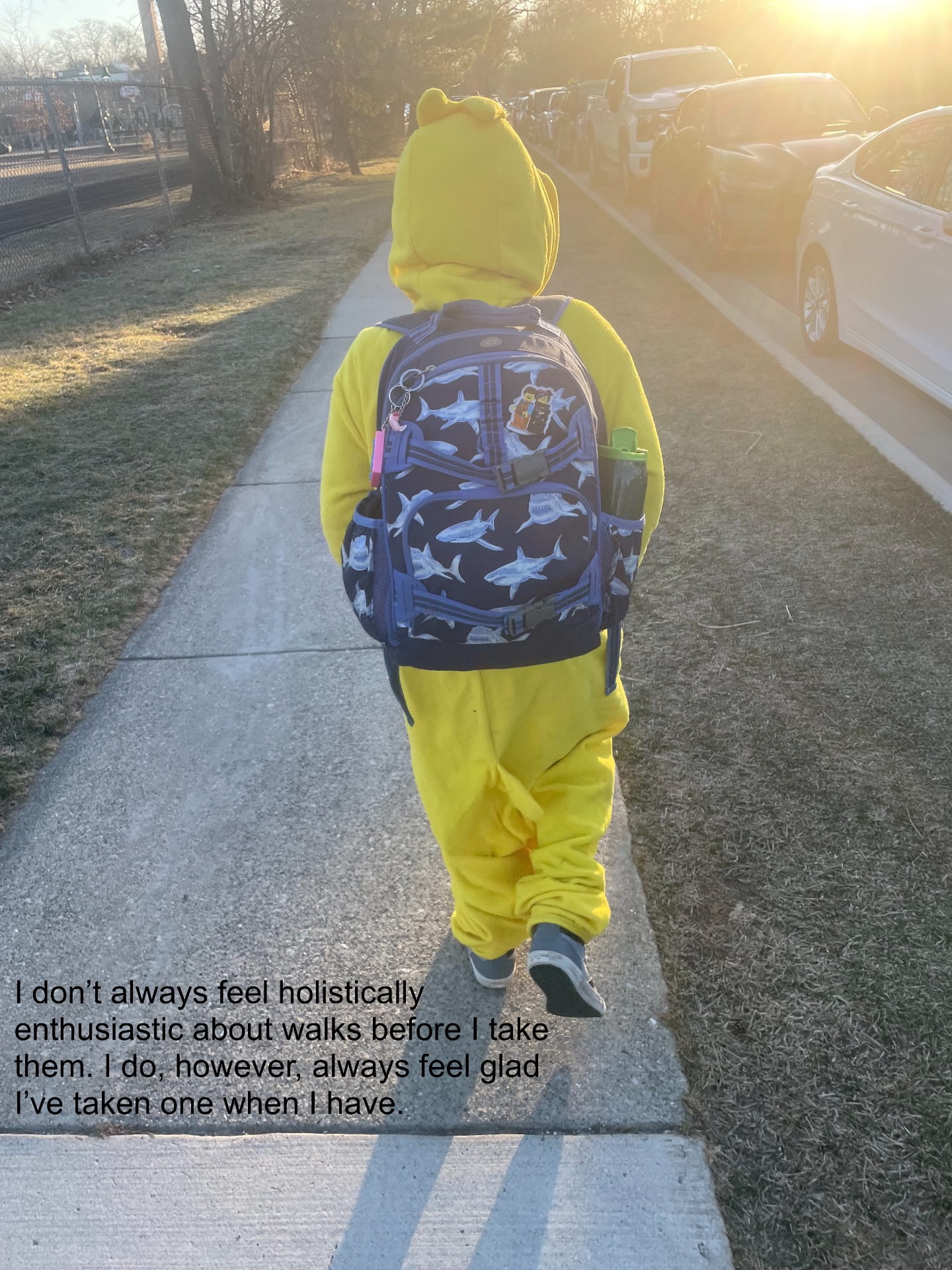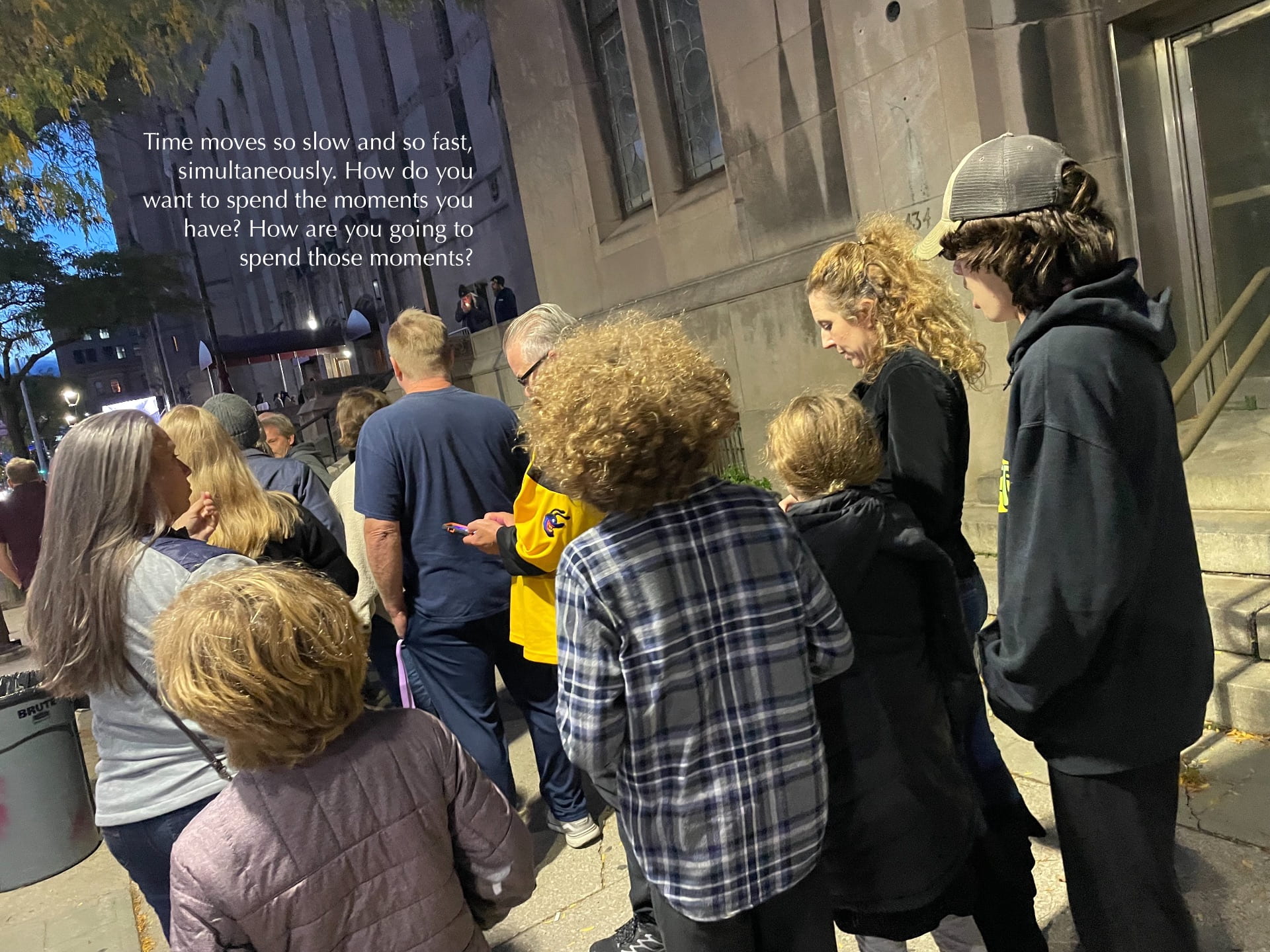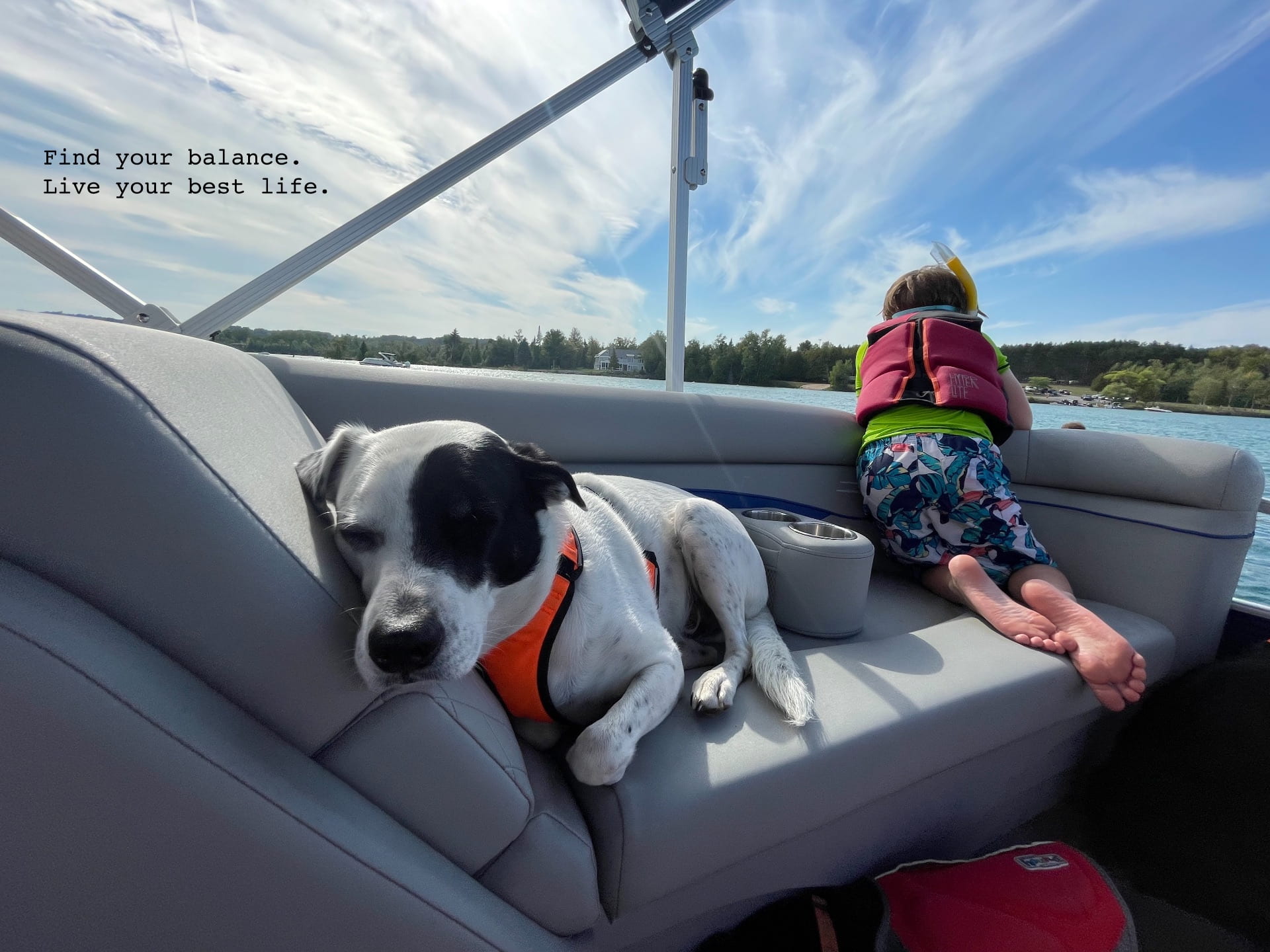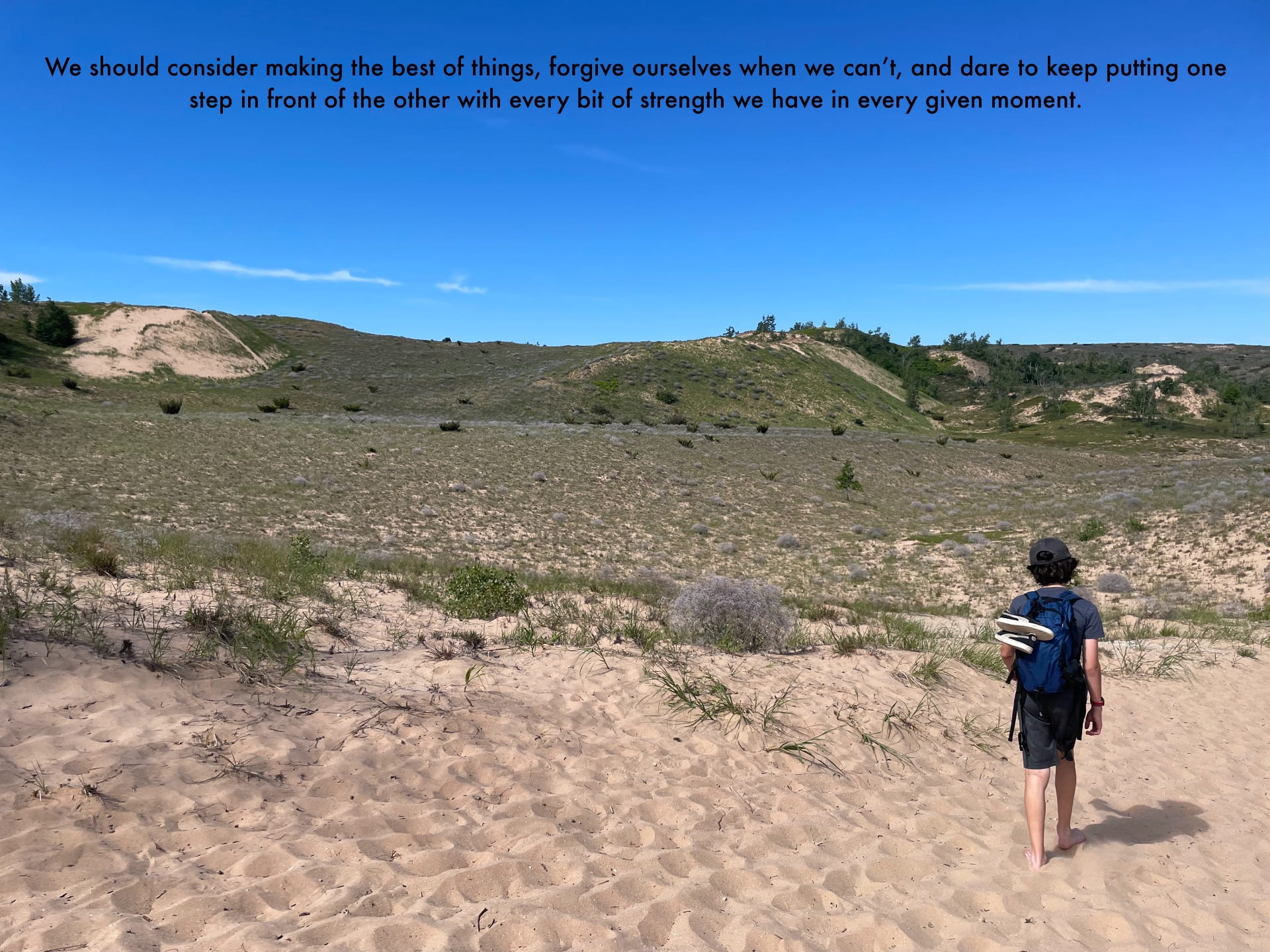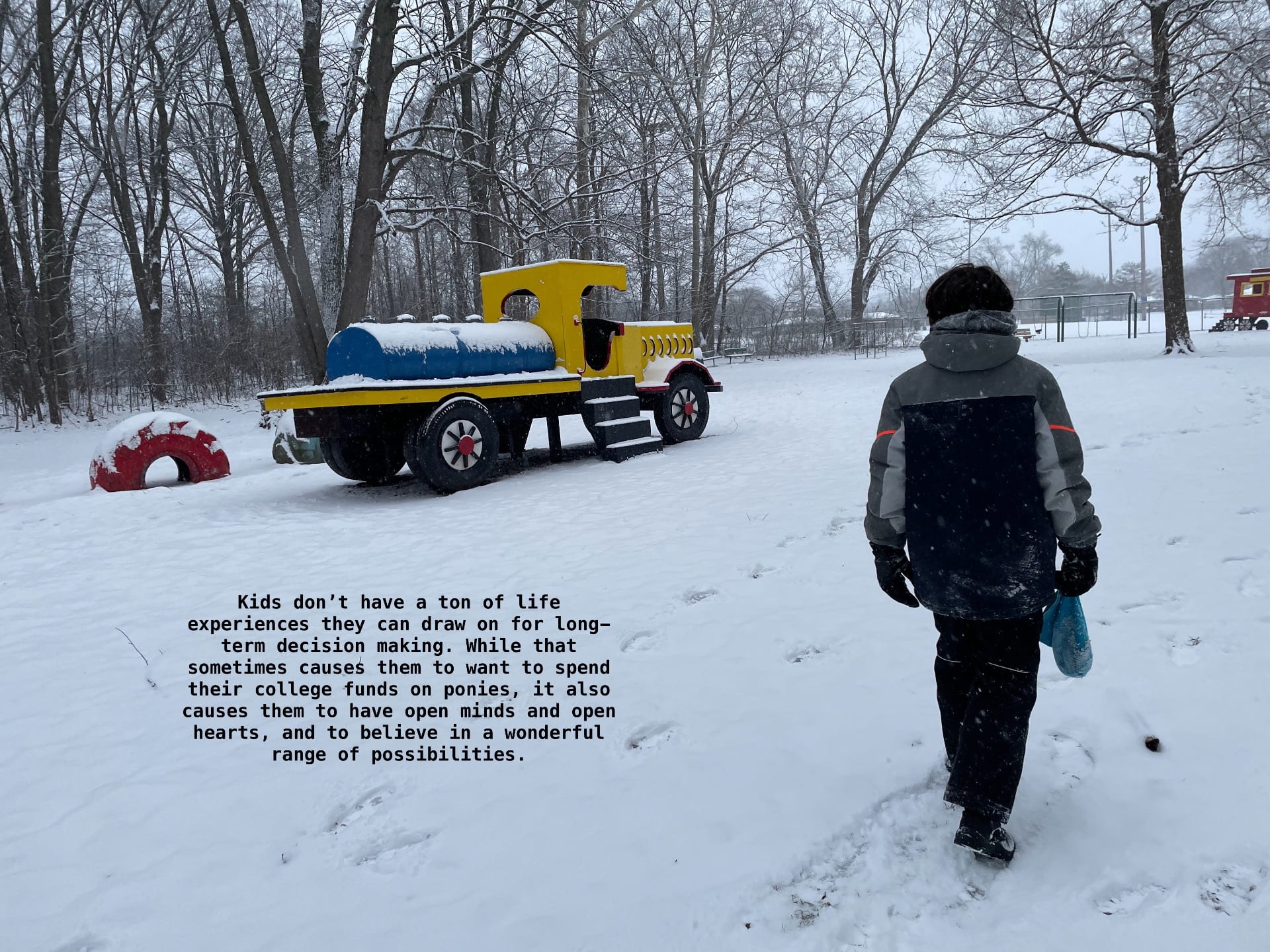A Walk In Progress
We each have a certain amount of minutes. We don’t know how many that is. Research shows that the more of those minutes we spend being mindful and positive the more we are likely to have, and the more we are likely to enjoy. Taking walks tends to help me be increasingly mindful and positive. I find walks to be joyful and fulfilling.
I went for another walk today. I’ve been going for as many walks as I can. Walks are great reminders for me. Being present during a walk brings me growth-producing benefits.
I don’t always feel holistically enthusiastic about walks before I take them. I do, however, always feel glad I’ve taken one when I have. Remembering that helps motivate me.
The other day I took a walk with our 9 year-old. Even better than a walk by myself, a walk with someone I love. We had been sitting on the couch. We both started falling asleep. Nothing wrong with a good nap on a lazy weekend day, but what about a walk instead, I thought.
I gave him the option. I said we could either close our eyes and drift off into our naps, or we could go for a walk. I was glad he chose the walk. We had to jump up in that moment, get geared up and step out the door or it never would have happened. We did it. Next thing I knew we were on our way.
A mile and a half to the neighborhood coffee shop. Not too long, and just long enough. The air was crisp and the sun was shining. Perfect. A perfect winter moment. Just enough bite to feel everything and the constant companion of the sun following along the whole time, warming out faces and counterbalancing the cold. We talked, laughed and had a great time.
Sometimes on a walk, I slip away from presence and into rushing. When I do, it feels like an opportunity to return to the present. It feels like a chance to build that mindful muscle.
I can’t think of an endeavor that has an end. We’re always becoming. Most of what we do we need to learn to do, then refine, then practice, and then spend our time continuously enhancing. That goes for mindfulness, too. Heck, that goes for going for a walk.
Our lives are not about reaching a point at which we feel comfortable stopping, but rather about continuously developing into more happy, fulfilled and accomplished versions of ourselves along what is ideally a balanced journey.
Walks help me think clearly. They help me spend time with people I love in fun ways. They give me exercise and they make me slow down.
I’ve always been very much a work in progress. I find more and more each day, that the work progresses in increasingly positive and meaningful ways when I also have a walk in progress.
Live. Love. Listen. Learn. Lead. Thanks.
